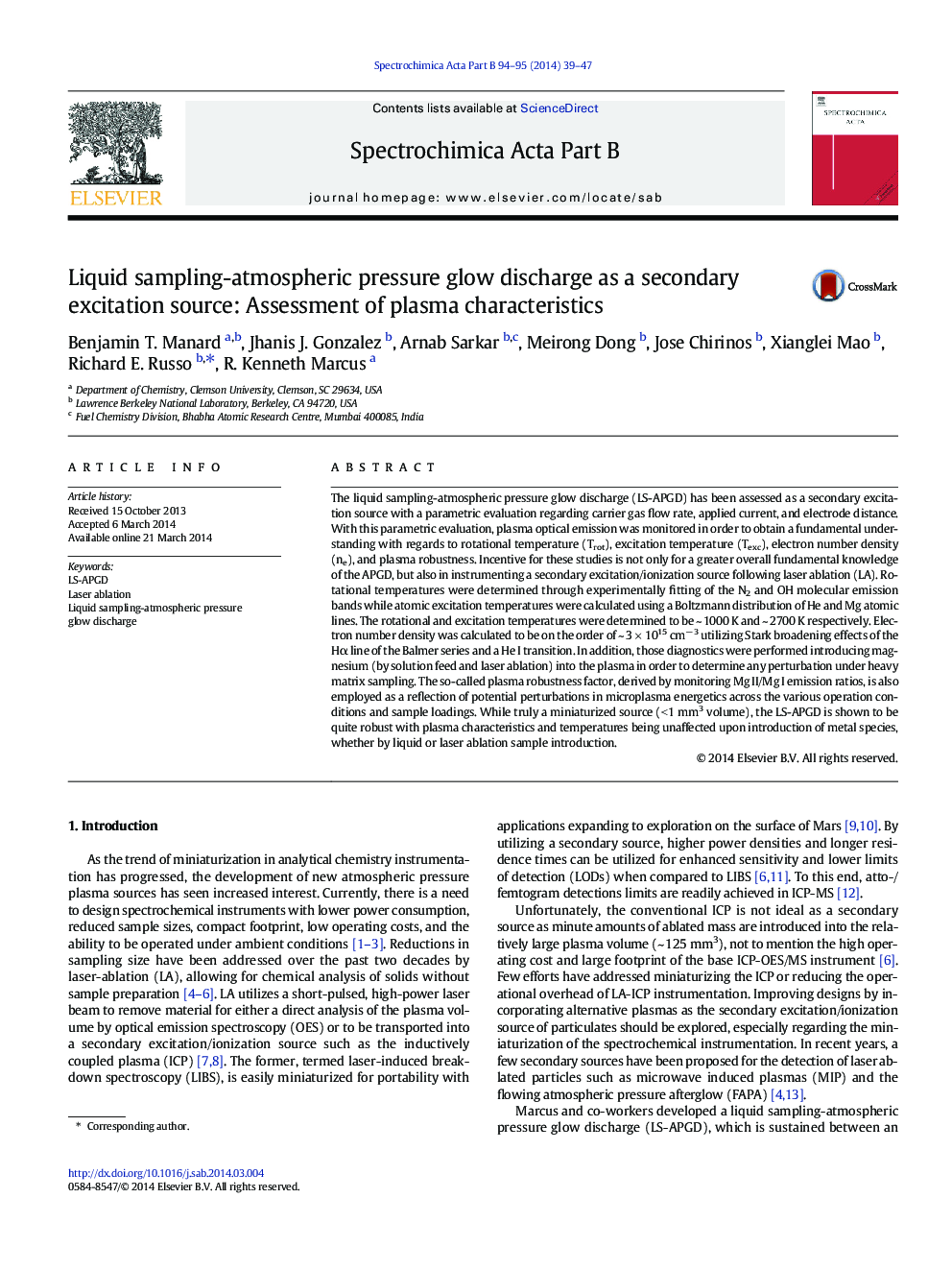| Article ID | Journal | Published Year | Pages | File Type |
|---|---|---|---|---|
| 1239690 | Spectrochimica Acta Part B: Atomic Spectroscopy | 2014 | 9 Pages |
•Liquid sampling-atmospheric pressure glow discharge (LS-APGD)•LS-APGD as a secondary excitation source for laser-ablated (LA) particle analysis•Rotational and excitation temperatures, electron number densities and robustness•Temperatures are in line with flames and low power ICP and MIP sources•Electron number densities were on par with typical, analytical ICPs
The liquid sampling-atmospheric pressure glow discharge (LS-APGD) has been assessed as a secondary excitation source with a parametric evaluation regarding carrier gas flow rate, applied current, and electrode distance. With this parametric evaluation, plasma optical emission was monitored in order to obtain a fundamental understanding with regards to rotational temperature (Trot), excitation temperature (Texc), electron number density (ne), and plasma robustness. Incentive for these studies is not only for a greater overall fundamental knowledge of the APGD, but also in instrumenting a secondary excitation/ionization source following laser ablation (LA). Rotational temperatures were determined through experimentally fitting of the N2 and OH molecular emission bands while atomic excitation temperatures were calculated using a Boltzmann distribution of He and Mg atomic lines. The rotational and excitation temperatures were determined to be ~ 1000 K and ~ 2700 K respectively. Electron number density was calculated to be on the order of ~ 3 × 1015 cm− 3 utilizing Stark broadening effects of the Hα line of the Balmer series and a He I transition. In addition, those diagnostics were performed introducing magnesium (by solution feed and laser ablation) into the plasma in order to determine any perturbation under heavy matrix sampling. The so-called plasma robustness factor, derived by monitoring Mg II/Mg I emission ratios, is also employed as a reflection of potential perturbations in microplasma energetics across the various operation conditions and sample loadings. While truly a miniaturized source (< 1 mm3 volume), the LS-APGD is shown to be quite robust with plasma characteristics and temperatures being unaffected upon introduction of metal species, whether by liquid or laser ablation sample introduction.
